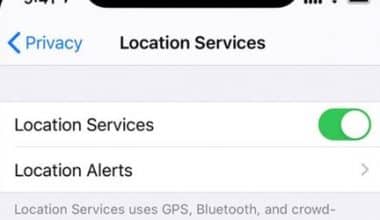Technology is giving teachers new ways to improve and challenge the minds of young people. Today, people are getting more and more excited about the possibilities of assistive technology, virtual and augmented reality, high-tech collaborative tools, gamification, podcasting, blogging, 3D printing, artificial intelligence, personalized learning, and a lot more. Read on to learn about educational technology, an educational technology company, and an educational technology degree. Also, we will explore educational technology job and why educational technology is important.
Educational Technology
Educational technology is a term for tools that help people work together in an active learning setting. Educators can use teaching technology in the classroom in a number of ways. Among these are making dynamic textbooks with custom case studies that connect to the news of the day. Gamification is another way that educational technology is used. In this process, games and activities are added to classroom lessons to help students learn ideas in a fun way. Educational technology can also be used to take attendance, assign tasks, and give quizzes. This helps teachers figure out which students are the best and worst performers. Educational technology can be used to get real-time feedback on how to teach, what to teach, and how to teach it. It can also let students see their own growth right away.
Educational Technology Degree
Graduates with a degree in educational technology can work in K–12 public schools, private schools, the business world, government agencies, the nonprofit sector, and higher education institutions. Educational technology programs show students how to use hardware and software to help them learn better. Educational technology includes the use of online learning (also called “e-learning”), mobile learning, video learning, computer-based training (CBT), and learning management systems (LMS). In addition to traditional on-campus schools, there are a lot of online degree programs in educational technology, which is also called instructional technology, ed tech, edtech, or edutech. People who want to work in educational technology should be very good at staying organized and talking to people. It is also important to be able to use a variety of technical training tools and methods.
Educational Technology Degree Requirements and Coursework
Educational technology is a field that could be a good fit for people who are patient, interested in teaching and technology, and have good organizational and communication skills. Letters of reference, a personal essay, and a minimum undergraduate GPA of 3.0 or above are often needed to get into a degree program in educational technology. Some of the most popular courses in a degree program in educational technology are:
- Managing Educational Technology Resources
- Research in Instructional Technology
- Student Practicum
- Teaching Information in the Digital World
- Applying Theories of Learning to Technology
- Differentiated Instruction with Technology
- Interactive & Emerging Technologies
- Leading Technology Change in Schools
Educational Technology Company
By 2025, education will be worth $7 trillion as a business. The most important and popular businesses in this field will be new ones. These businesses will influence the next generation. We will look into the company that makes educational technology that you must keep an eye on. These companies could be the best in the EdTech business.
#1. 2U
2U is a digital education tool that allows people to learn at a high level from afar. The company started when an MIT professor realized that he could put his classes online for free and with no restrictions. Through its subsidiary edX, 2U works with colleges and universities to put their material and courses on an online learning platform that lets people take everything from free single courses to whole degrees.
#2. Amplify
Amplify helps students in grades K–12 learn in schools all over the U.S. The platform allows teachers to work together to create the main and extracurricular curriculum and tests. It focuses on reading, math, science, and English Language Arts (ELA), and it helps students learn better by giving them training lessons and giving teachers plans for professional development.
#3. Great Minds
Great Minds is a company that wants to teach people about the world by giving them classes that are full of information. Every Great Minds lesson, from math to English, is based on real-world situations and builds core skills. Courses also come with tools for teachers’ professional development and coaching, so that both students and teachers can grow during their time together.
#4. Bright Horizons
Bright Horizons helps working families by providing services for different times of life, such as care for children, help with college, and care for the elderly. The company has centers with healthy food, flexible scheduling, and longer hours for parents with younger children. With the My Bright Day app, which shares pictures, updates on milestones, and other information, parents can also find out how their children are doing.
#5. Skillsoft
Skillsoft is a cloud-based learning tool that helps companies train their employees and improve their skills. It has a huge library of video-based classes that cover everything from the basics of leadership to product management skills to the basics of data science. On its website, Skillsoft says that more than 12,000 companies have used it.
#6. Guild
Guild Education helps working adults continue their education with online classes from colleges, including veteran-friendly schools and Historically Black Colleges and universities. Once a company and Guild Education have worked together to create a learning program, Guild Education helps with marketing, keeps track of how employees are doing and takes care of any other administrative tasks. Guild Education has worked with some of the biggest names in the world, like Chipotle, Disney, and Discover.
#7. Multiverse
Access to professional prospects is not fair. Multiverse is trying to change this by making more professional apprenticeships and offering programs in areas like data analytics, digital marketing, and business analysis. Through work, training, and involvement in the community, the company wants to help a diverse group of leaders build their social capital.
#8. Duolingo
The free app from Duolingo allows people to learn up to 40 languages, from Spanish to Esperanto, in a game-like way. Users move up to new levels by getting points and completing tasks in a set amount of time. The app also uses AI, machine learning, and language science to customize each user’s lessons and make learning a language more fun and effective.
Educational Technology Job
Educational technology has spread quickly around the world. In American schools, computer labs are the standard. In classrooms from India to Brazil, kids use tablets to learn and explore. Educational technology can be a fun, exciting, and well-paying job for people who want to change the world through technology. Here are five great jobs in educational technology.
#1. Educational Technologist
Educational technologists create, test, and use a wide range of tech-based learning tools in schools and classes. They do this by using their skills and knowledge of both educational methods and technological processes and tools. Educational technologists also teach teachers how to use tech tools and how to best use them in their everyday lesson plans and in the school’s set curriculum.
More and more people are getting degrees in educational technology, and educational technologists can be found in schools, testing rooms, and everywhere else where people learn. ETs make about $62,000 a year on average.
#2. Educational Software Programmer
Educational software programmers know a lot about programming and interface design, as well as how schools work and what the core curriculum is. They use this knowledge to make digital software tools that can be used in and out of the classroom.
Educational software makers make software that is used in all types of schools, from preschool to college, as well as software that can be used at home to help students learn or improve skills like reading and math. ducational software comes in many different styles and covers a wide range of topics. For example, there are reading games for toddlers and step-by-step coding classes for middle schoolers. On average, educational software coders make $92,000 per year.
#3. Course Designer
They use their understanding of education and user interface and user experience design to make courses on technology platforms that are specific to a certain topic. However, course designers work with other educational technology professionals to make courses for people of all ages and in all kinds of fields. This is a great job for techies who love visual design and have strong UI experience. Course designers usually work for companies that make educational tools and games. On average, they make $78,000 per year.
#4. Training Materials Designer
Training materials designers work on the business side of educational technology. They make sure that training programs for corporations, think tanks and even successful small businesses are effective and easy to use. Training materials designers earn an average of $61,000 per year. To make training programs for a wide range of platforms, they use their education, in-depth knowledge of learning styles and tools, and good user interface knowledge.
#5. Media Specialist
Media specialists don’t just work in schools. You can also find them in libraries, database warehouses, and other places with big collections of media that can be used to teach not only students but also the rest of the community. Media specialists keep collections up-to-date based on what people want and what the community needs. They also teach people how to find information and improve their overall literacy, and they offer the best media sources to students and library users based on how they learn and what they want to learn. The average salary for a media expert is $48,000 per year.
Why Educational Technology Is Important
The following section discusses why educational technology is important in the teaching and learning process.
#1. Creates Awareness of New Advancements in Technology
Students can learn about and appreciate new technologies as soon as they are developed, thanks to educational technology. Today’s students are more likely to use new technologies effectively. Before integrating new tools into their professional occupations and academic pursuits, they can balance the advantages and disadvantages of those developments by having a thorough understanding of them. Students can understand the dynamics of new ideas, how to incorporate them into the classroom, and their potential results thanks to educational technology. As a result, kids become acquainted with various methods.
#2. Enables Learners to Acquire New Skills and Knowledge
Through online programs, educational technology offers students numerous opportunities to develop their talents and broaden their knowledge in a variety of topics. It is your duty as a student to conduct research on and learn more about the subjects that motivate you to put in the effort necessary to achieve your academic objectives. If you are interested in information technology, for instance, you can learn new material that is important to your field. As a result, you can generate fresh concepts and share them with your coworkers to foster excellent working relationships.
What Is an Example of Educational Technology?
The use of cloud-based learning software, applications, blogs or discussion boards, digital whiteboards, and other interactive online resources for students and teachers are a few examples of ICT in education.
What Is the Types of Educational Technology?
- Asynchronous and synchronous. You can learn anywhere, not just in school.
- Linear learning. Computer-based training, or CBT, is when you learn on your own time using a computer or a handheld device like a tablet or smartphone.
- Collaborative Learning.
What Are the Functions of Educational Technology?
Education technology can automate tasks, make it easier to get information, make it possible to share knowledge and data, repeat information across different media, collect important knowledge, share ideas, show how important ideas work, and more.
Can Educational Technology Replace a Teacher?
Definitely not. We don’t think technology will ever be able to take the place of great teachers, but we do think that great teachers will change the world with technology. A teacher’s job is about more than just passing on information.
How Can Educational Technology Be Used in the Classroom?
Digital scenarios and models help teachers not only plan lessons more quickly but also keep track of how their students are doing. There is software that lets teachers give or get feedback about their students in real-time.
References
Related Articles
- CHIEF TECHNOLOGY OFFICER: Duty, Salary & Role
- INSTRUCTIONAL DESIGNER: What It Is, Job Description, Salary & How to Become One
- VIRTUAL WORKPLACE: Understanding How Virtual Workplace Work
- CLIENT SERVICE ASSOCIATE: What Is It & All to Know?
- MARKETING ASSOCIATE: What Is It & How Do You Become One?






